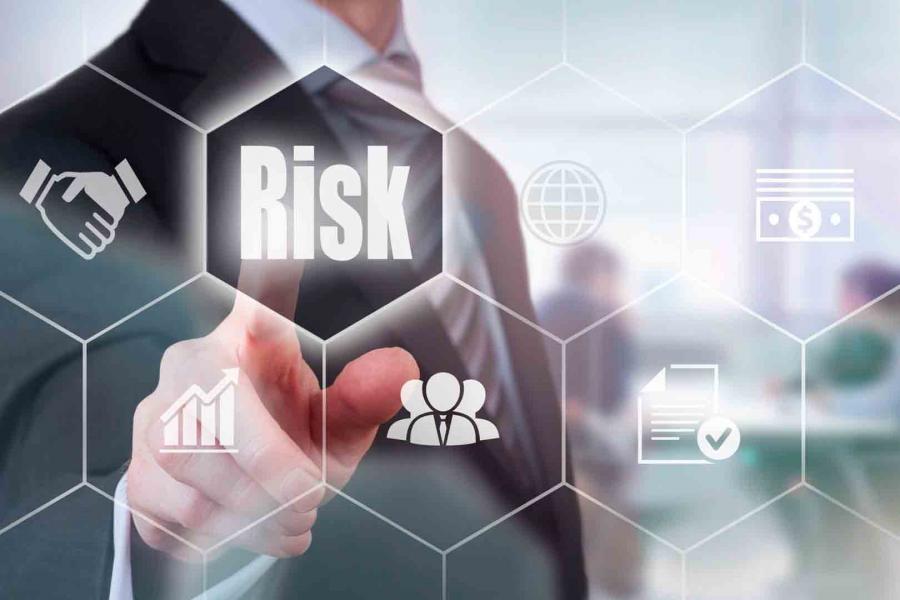The importance of risk management

Being unaware of the risks of a project leads to poor decision making, causing project deviations that often impact on its completion.
When embarking on a project, in addition to assessing the roadmap and the factors that will lead to success, we must also ask ourselves about the causes that could delay or pose a potential risk to the project.
A project manager needs to control all aspects that may hinder the project, so today, we will talk about risk management and control processes that are needed when starting any project.
RISK MANAGEMENT, WHAT IS IT?
The project manager must handle all the aspects that can detract from the development of a project.
Now, how does a project manager set up the guidelines for the organization and approach of a project? It must be considered that complications can considerably affect the progress of any plan.
Within the context of project management, we can define risk management as the area that analyzes and considers the risk factors that can be found within the objectives of a project. Therefore, risk management should be understood as a preparation for those unknowns that may hinder the life of a project.
Risk management helps to better plan and organize the life cycle of a project. If the project manager is aware of the risk factors that may affect the project, he or she can plan and develop a risk plan to accompany the project roadmap and thus manage the tasks, budget and performance of the team members.
Therefore, risk management is so important in project management. Being able to identify these risks will facilitate the project's trajectory and push it forward so that no snags are encountered.
IDENTIFY RISKS
When the project manager draws up the project roadmap, two types of risks will be identified as the main ones. These risks can have a negative impact on the project, so the manager will be responsible for preventing them from affecting the project's objectives.
The Project Management Institute (PMI) recognizes these risks as follows:
Commercial risks: refers to risks that pose a problem of a commercial nature. Commercial risks will directly affect an organization's purpose or objectives. Managers will seek to address those risks that may pose a problem to the company's sales and profits.
Pure or insurable risks: these are business risks that do not involve a loss of profit, but rather a risk of loss to the organization. This type of risk can seriously affect the company's operations and personnel. Among the pure or insurable risks there are four potential problems:
-
Direct damage to property
-
Indirect losses (stakeholders, suppliers, etc.)
-
Legal liability risks
-
Personal liability risks
Other factors that may pose a problem for the project include communication, team management, time and budget. These elements can become risks if a good project roadmap is not kept.
Each project has its own risks, and it will be the project manager's job to align the entire team with the risks, so that the damage is always as small as possible.
PROCESSES IN RISK MANAGEMENT
The main elements on which risk management functions and works are:
Identify
The first step is to create a good agenda and roadmap. Identify the points at which the project is likely to be affected. Risk identification is an ongoing process that is modified for each project or each project process to uncover future contingencies.
Evaluate
Once the risks have been identified and the project sheet has been established, the risks must be evaluated qualitatively and quantitatively. The qualitative analysis will focus on prioritizing the recognized risks by analyzing their impact.
The quantitative risk analysis is responsible for numbering the result that the risks may have on the overall objectives of the project and the organization. This strengthens decision making for risk management.
Plan
Once the qualitative and quantitative analysis has been carried out, the project manager can start planning actions to reduce the chances of risks in the project. At this point, the manager will also direct the team and individuals to control these actions.
Responses to risks must be measured so that they can be met on time, on budget and among stakeholders.
Control
Once the risk responses have been implemented, it will be necessary to monitor them to check whether they have been calculated correctly and to identify future risks that may pose a problem for the project or for achieving the organization's objectives.
RISKS AND THE PROJECT MANAGER
Finding the triggers that warn of future risks and setting them on the road to success will be the task of the project manager. Integrative thinking is also a common characteristic of project managers. Being able to identify and resolve risks in a coherent way, generating new responses is the difference between conventional and integrative thinking.
Project managers need to remain calm even in times of risk, so they must determine, visualize and achieve solutions in the most integrative way possible. The purpose of risk management and the manager's main mission will be to identify, analyze, determine and control the actions of a project to avoid deviations and contribute to its success.
The ability of some project managers to recognize risks before they occur is called a black swan. A black swan is a potential risk that is difficult to predict and possibly costly for the project.
Therefore, a project manager must be aware of the danger and focus activities in a way that generates positive results and profits for the project. Project management is an area that is expanding every day, and at La Salle URL we have extensive experience in project management. Discover the studies in Project Management and become the project manager you have always dreamed of.